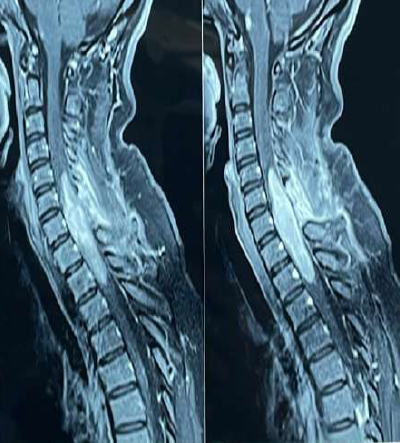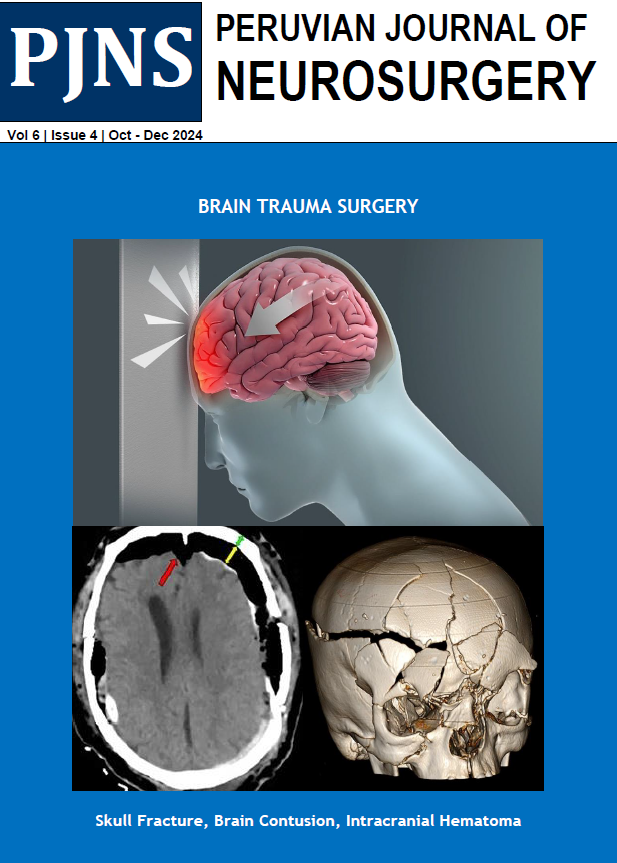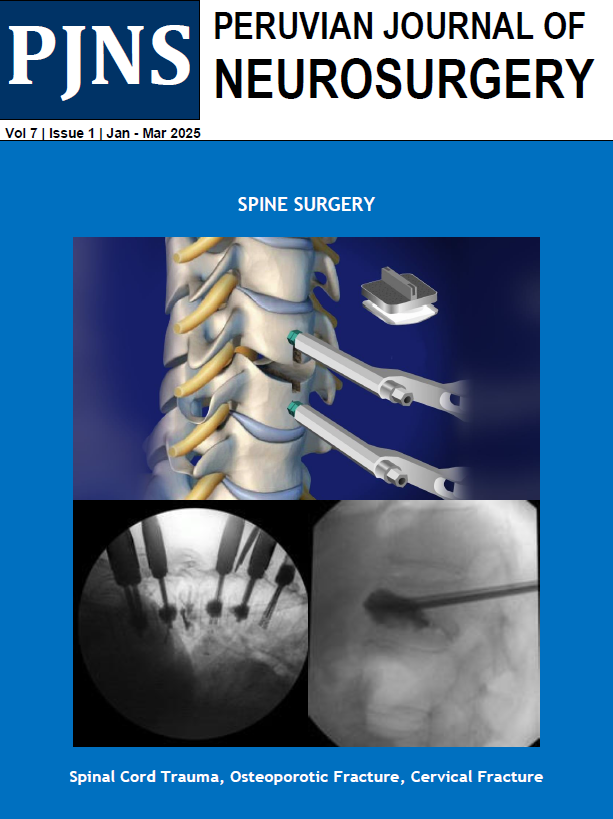Usted está aquí
Peruvian Journal of Neurosurgery
Isolated spinal Rosai-Dorfman disease: Presentation of a recurrent case and review of literature
ABSTRACT
Introduction: Rosai-Dorfman disease, also known as sinus histiocytosis, is a proliferative process characterized by painless lymphadenopathy and metabolic disorders. Central nervous system (CNS) invasion is uncommon (5%), and an isolated variant occurs in only 0.5%. Symptoms such as paresis and sensory disturbances are more frequent in the thoracic spine. Magnetic resonance imaging (MRI) is fundamental for diagnosis, which is confirmed by histopathology and immunohistochemistry studies. Surgical resection is the therapy of choice.
Clinical case: An adult female patient with no significant medical history presented with a 9-month clinical picture characterized by progressive weakness in the lower limbs. Upon examination, she was awake with left hemiparesis and preserved sensation. A cervicodorsal MRI showed an intraspinal cystic lesion within the C1-C5 spinal cord with signs of spinal cord edema and increased volume. Posterior cervical surgery with subtotal excision of the intramedullary tumor was performed. Postoperatively, the patient's clinical course was stable with quadriparesis predominantly in the lower limbs. However, in 3 months, increased paresis and sphincter disturbance were evident, leading to further surgery. Pathology and immunohistochemistry results revealed Rosai-Dorfman disease.
Conclusion: Rosai-Dorfman disease of the central nervous system (CNS) is a rare, benign disorder that can cause spinal cord invasion and spinal cord compression, resulting in paresis or sphincter disturbance. The presence of a contrast-enhancing lesion on MRI is mandatory for determining the option for surgery, and histopathological examination is essential for confirmatory diagnosis.
Keywords: Histiocytosis, Sinus, Spinal Cord Compression, Paresis, Central Nervous System (Source: MeSH NLM)



